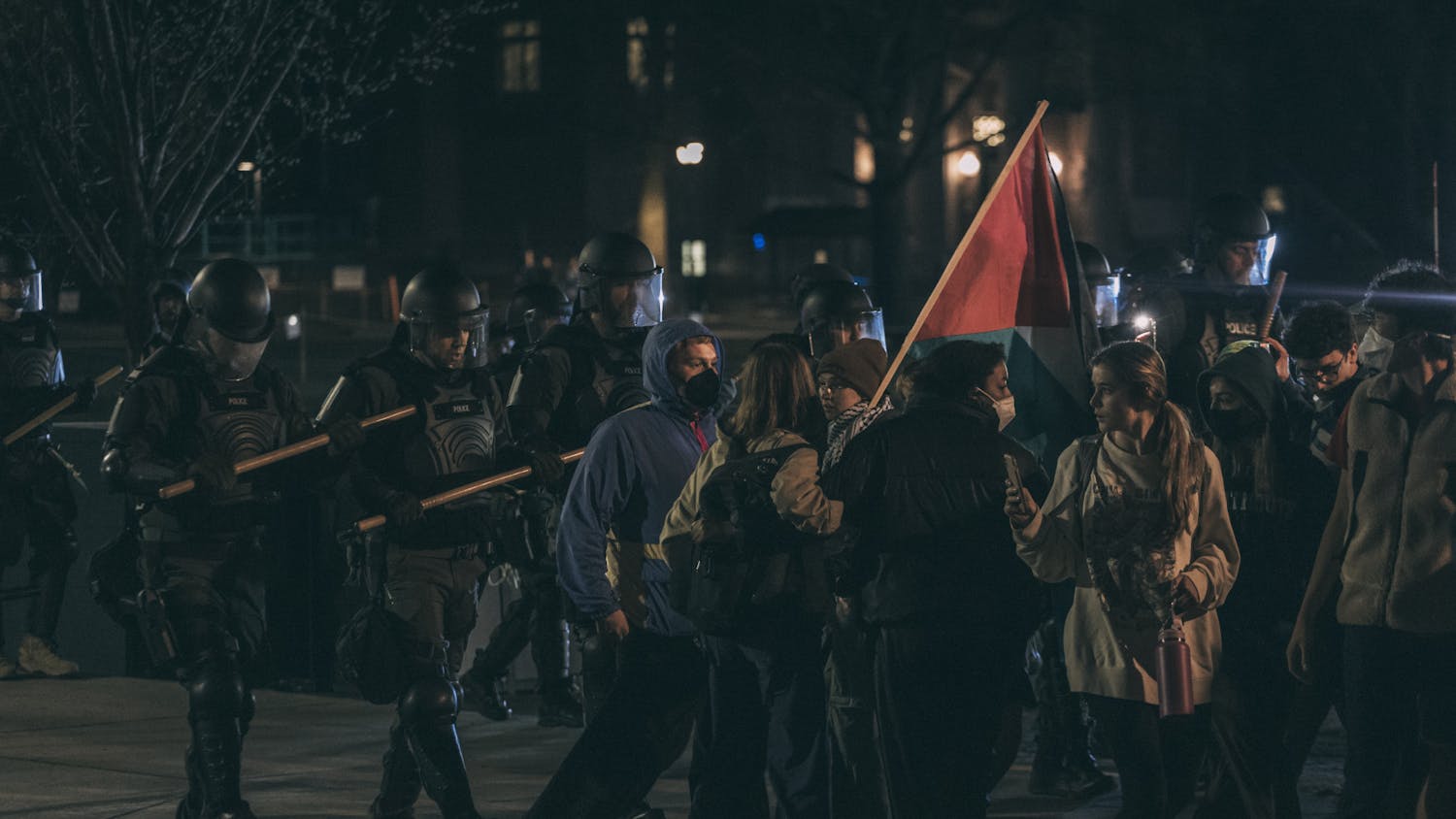On March 18, 1949, Dartmouth student Raymond “Ray” Cirrota was killed in his dorm room in Middle Massachusetts Hall when he was pushed by another student, fell and hit his head on the corner of a desk. While many facts of the incident remain unknown, investigators determined that the blow from the desk caused a brain hemorrhage, which led to Cirrota’s death at 5:05 a.m. the next day.
Eight other students were in the room during the time of the incident, all of whom were indefinitely suspended from the College. However, only two appeared in court for the crime, and neither went to jail. The perpetrator, Thomas Doxsee, was ultimately fined a mere $500. Upon the announcement of the court’s decision, Vincent Cirrota, Raymond’s father, fainted in open court and moaned: “$500 for my son’s life! Couldn’t they do better?”
All of this information is available — in the form of internal memos, letters and newspaper articles — at the Rauner Special Collections Library. Also in Rauner is a copy of Shakespeare’s First Folio from 1623; a first-edition Book of Mormon; clay tablets from Babylonia dating back to 2350 B.C.; and issues of The Dartmouth since 1839. Those documents and artifacts are meticulously organized by Rauner’s staff of librarians.
The Special Collections Library was founded in 1928 and renamed in 1996 after former Illinois Gov. Bruce Rauner ’78. The library is home to Darmouth’s rare books, manuscripts and archives collection, which it has amassed largely through donations, according to head of special collections Jay Satterfield.
“People contact us all the time with things that they would like to donate to the collections,” Satterfield said. “Most of them don’t fit in with what we want … but when they do, it’s absolutely wonderful.”
Rauner also purchases some items directly from dealers, which Satterfield oversees. According to College archivist and records manager Peter Carini, items are then cataloged and organized into either Rauner’s primary site at Webster Hall, a warehouse in Lebanon or a location in Bucksport, Maine, that houses Rauner’s film storage.
According to Morgan Swan, Rauner’s librarian for teaching and scholarly engagement, items that are sent off campus are those that are the “lowest used by students.”
The items that remain in Hanover function as a treasure trove of information for students, professors and visitors. According to Satterfield, in the last 20 years, Rauner has witnessed an increase in the number of students who take advantage of its collections, largely due to Rauner’s increased visibility in Dartmouth classrooms.
That change is evident to Rauner staff like Satterfield and Carini, who were both hired in 2004 and witnessed the library’s use surge. When they arrived on campus, both Satterfield and Carini said very few classes took advantage of Rauner’s resources. Swan, who was hired in 2012, agreed with this sentiment, adding that in the past, the library hosted “maybe six classes a year.”
“There was some teaching going on, some curricular support going on, but not much,” Swan said.
Professors are also increasingly working with Rauner librarians to select materials for use in their courses, Swan said. Dartmouth’s academic departments hold about 300 class sessions in Rauner each year, Swan added.
“[Rauner] lends a concreteness sometimes to the abstract concepts and ideas that you’re discussing in class,” Swan said. “It allows sort of an anchor point that students can refer back to for the rest of the term when they’re talking about certain issues.”
The rise of professors using Rauner as a class resource led the College to create Swan’s current position in 2012. Much of his work involves curating materials with professors and overseeing the public services side of the library, he explained.
“We want students to have a really cool, memorable hands-on experience with the stuff of history without too much mediation, so if we can get students in seats touching the stuff, we don’t get too concerned about how that happens,” Swan said.
Satterfield agreed that Rauner contributes to “fabulous classroom experiences” for students.
“Special collections can provide amazing classroom experiences where really abstract concepts can become very concrete very quickly when you place a manuscript or a rare book in front of somebody,” he said.
Rauner’s expansion into Dartmouth’s curriculum was a result of Satterfield and Carini’s efforts to make faculty more aware of the library's available resources. Swan stated that faculty often “reach out” to the librarians once they realize that collaborations with Rauner are a possibility.
The engagement between Rauner and academic departments has proven to be a huge success, according to Satterfield, who described the library's engagement with departments as “some of the most intense of any special collections in the country.”
Satterfield has also seen an increase in students utilizing Rauner on their own since he started.
“I am a really big believer in open access to the collections,” he said. “I want … anybody to feel like they are empowered to come in here and ask for anything in the collection and not feel like it’s some kind of big deal.”
Even after two decades working at Rauner, Carini — who is retiring after this year — still finds novelty working in Rauner.
“You’re always finding something new and unexpected when you’re doing that work,” he said.
Swan agreed, adding that a lifetime wouldn’t be enough to see all that Rauner has to offer.
“We’re up here in the middle of the woods, a tiny school, relatively speaking, and we have these world-class, amazing collections,” he said. “The diversity and the depth and the breadth of our collections is phenomenal.”




